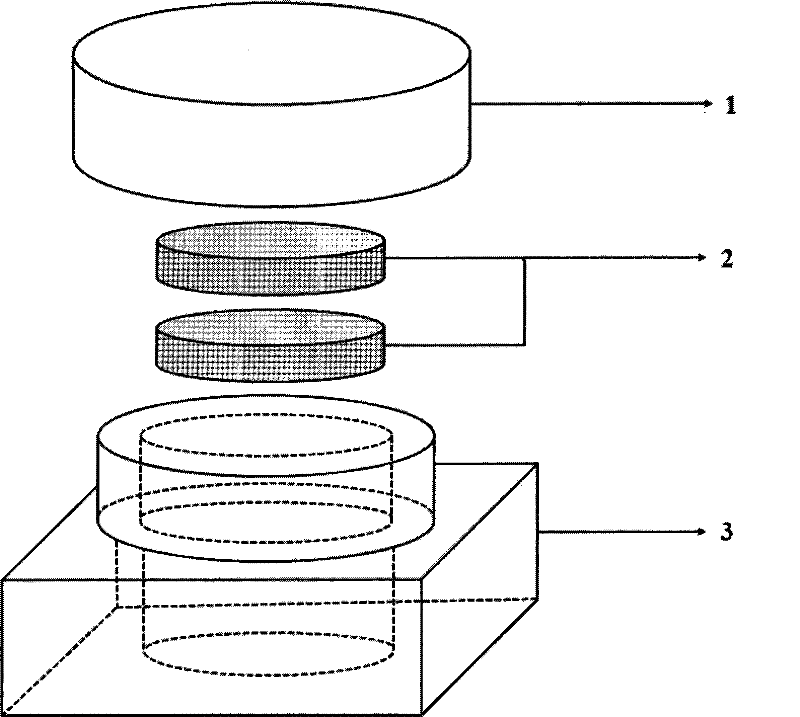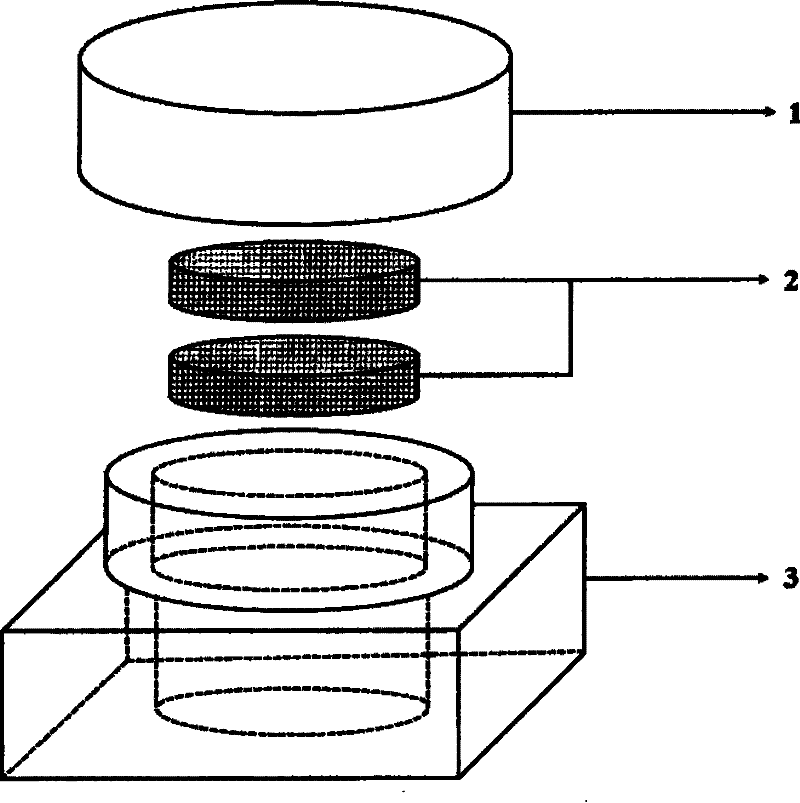Cryopreservation in situ apparatus and method for adherent cell three-dimensional culture
A technology of adherent cells and three-dimensional scaffolds, applied in the field of bioengineering, can solve the problems of limited number of cells, difficult and uniform digestion efficiency, increased chances of bacterial infection, etc., to achieve efficient and rapid cell expansion rate, reduce time and manpower, The effect of reducing the risk of bacterial infection
- Summary
- Abstract
- Description
- Claims
- Application Information
AI Technical Summary
Problems solved by technology
Method used
Image
Examples
Embodiment 1
[0023] Such as figure 1 As shown, the laboratory adherent cell three-dimensional culture and in situ cryopreservation device involved in this embodiment includes a cryopreservation bottle cap 1 , a three-dimensional composite porous support 2 , and a cryopreservation bottle body 3 . The bottle cap 1 of the cryopreservation bottle and the bottle body 3 of the cryopreservation bottle form a cryopreservation bottle.
[0024] The frozen bottle cap 1 is a common plastic with a sealable screw opening, and a rubber gasket can be placed on the top of the bottle cap cavity to facilitate sealing as required.
[0025] The three-dimensional composite porous scaffold 2 is a disc-shaped loose porous biological carrier with a diameter of about 2 cm and a height of 5 mm. The microstructure is characterized by a porous sponge-like rigid skeleton.
[0026] The bottle body 3 of the cryopreservation bottle is made of glass, the inner cavity is cylindrical, and the height of the inner cavity is ...
Embodiment 2
[0030] The laboratory adherent three-dimensional scaffold culture and in situ cryopreservation methods involved in this embodiment take the culture of bone marrow mesenchymal stem cells (MSC) as an example:
[0031](1) Preparation process of three-dimensional scaffold: 10g of β-tricalcium phosphate (β-TCP) is used as raw material, mixed with 50ml of pure water, stirred under heating (above 80°C) for 30 minutes, ultrasonically oscillated for 10 minutes, and the volume concentration is added while stirring 5% chitosan and volume concentration of 10% gelatin each 25ml and a small amount of sodium carboxymethyl cellulose, heating and stirring, pad the bottom of the mold plate with filter paper soaked in a low concentration 0.05mol / l glutaraldehyde solution, hot melt adhesive After filling the mold cavity, lightly paste a piece of filter paper as mentioned above on the top of the mold plate, and compact it with a flat plate. Pre-freeze at -20°C for 2 hours, and freeze overnight at ...
PUM
| Property | Measurement | Unit |
|---|---|---|
| pore size | aaaaa | aaaaa |
| diameter | aaaaa | aaaaa |
| height | aaaaa | aaaaa |
Abstract
Description
Claims
Application Information
 Login to View More
Login to View More - R&D
- Intellectual Property
- Life Sciences
- Materials
- Tech Scout
- Unparalleled Data Quality
- Higher Quality Content
- 60% Fewer Hallucinations
Browse by: Latest US Patents, China's latest patents, Technical Efficacy Thesaurus, Application Domain, Technology Topic, Popular Technical Reports.
© 2025 PatSnap. All rights reserved.Legal|Privacy policy|Modern Slavery Act Transparency Statement|Sitemap|About US| Contact US: help@patsnap.com


